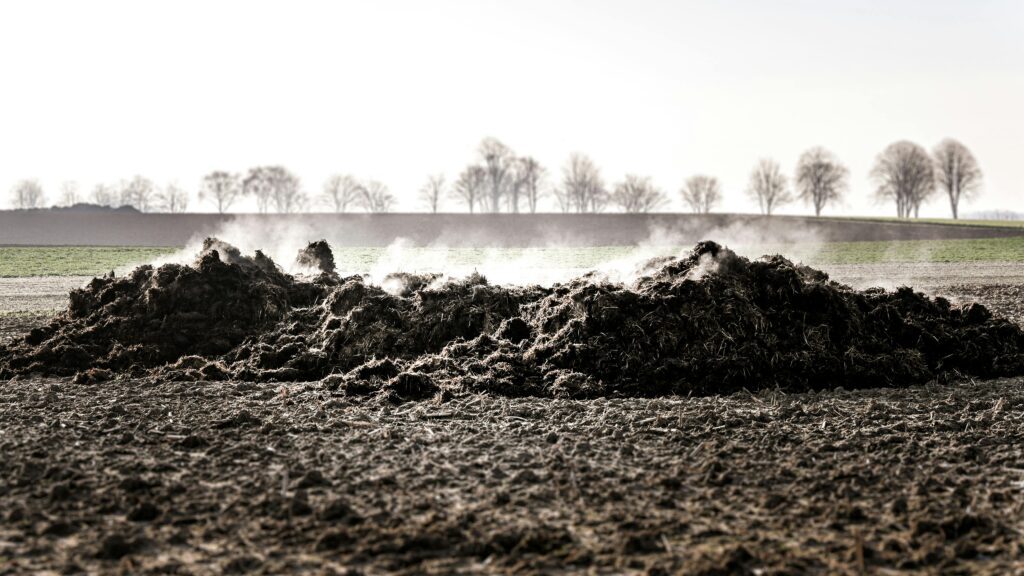Table of Contents
Introduction
Agriculturalists, in today’s agricultural landscape, are continually under pressure to enhance the yield of crops while reducing dependency on chemical inputs that compromise soil health. This is where it comes in as a scientifically proven, eco-friendly, and sustainable solution.
Unlike the artificial fertilizers that end up harming the environment, it use natural microbes to increase the fertility of soil, offer nutrients, and ensure plant growth. With a biological fertilizer, farmers will receive healthier produce without compromising the environment.
Demand for sustainable agriculture has never been higher, and with high costs of chemical fertilizers on the rise, farmers are shifting to alternatives that yield long-term benefits.
Biotechnology fertilizer innovations are also improving bio fertilizers to be efficient and commercially viable, bringing a symbiosis of science and nature. Not only do these fertilizers nourish the soil, but they also arrest greenhouse gas emissions, making them crucial tools in combating climate change.

Here in this blog, we are going to learn about the five assured benefits of bio fertilizer, highlight its role as a biological fertilizer, and learn how biotechnology fertilizer developments are shaping the future of agriculture. From improving soil fertility to increasing yield and reducing costs, it represent the potential of sustainable farming.
Benefits of Bio Fertilizer
The advantages of using bio fertilizer in sustainable agriculture are numerous. Farmers and researchers alike have observed significant improvements in crop productivity, soil health, and overall profitability when they replace or supplement chemical fertilizers with a biological fertilizer.
In this section, we’ll explore five proven benefits of bio fertilizer that make it a powerful tool for modern farming. Each benefit highlights not only the environmental impact but also the economic and social value for farmers across the globe.
With the help of biotechnology fertilizer technologies, these benefits are becoming more effective and reliable.
1. Increases Soil Fertility Naturally
One of the greatest virtues of bio fertilizer is the ability to boost soil fertility without the negative side effects of chemical inputs.
Traditional fertilizers have a tendency to undermine the natural balance of nutrients in the soil, but it make use of beneficial microorganisms to fix nitrogen, solubilize phosphorus, and release potassium. Such organic activity augments the soil content, making nutrients more accessible to plants.
As a biological fertilizer, it does not harm the soil biodiversity and causes no long-term damage.
Rhizobium bio fertilizers, for example, allow legumes to capture atmospheric nitrogen and phosphate-solubilizing bacteria to dissolve phosphorus for the plant.
With biotech technology in fertilizers, these microbial cultures are genetically engineered to withstand stress conditions to ensure the soil is enriched continuously. Farmers are aware of not only healthier soils but also less dependency on costly chemical alternatives.
It is therefore a sustainable process where enriched soil keeps feeding crops year after year.
2. Boosts Crop Yield and Quality
Another widely known benefit of the use of bio fertilizer is its immediate impact on crop yield and quality. Healthy soil with microbes promotes healthier root development, efficient nutrient uptake, and increased tolerance to abiotic stress.
As a result, crops become more homogeneous, with better size, taste, and nutritional value. This renders bio fertilizers extremely valuable not only to farmers but to consumers as well who seek quality food.
It enhances plant metabolic activities and photosynthesis, leading directly to improved yields. Crops, it has been proven by studies, that have been treated using bio fertilizers outperform the ones that are treated with chemical fertilizers alone.
The biotechnology fertilizer plays an important role in this as well since it ensures that the microbial strains work efficiently under different categories of soil and climatic conditions. Cereal, vegetable, or fruit farmers can rely on bio fertilizers for consistent performance.
This also means more market value, enhanced profitability, and long-term trust in sustainable agriculture.
3. Reduces Chemical Fertilizer Dependency
Chemical fertilizers have the potential to give quick returns but at a high cost—economic and ecological. Farmers spend a great deal of their income on chemical fertilizers, and the fertilizers themselves contaminate soil and water.
In comparison to this, it reduces the use of such inputs by giving a cost-effective and ecologically sound alternative. Farmers are able to utilize less quantity of chemical fertilizers in combination with bio fertilizers, gradually reducing overall intake while maintaining or even increasing yield levels.
This process makes a biological fertilizer a viable choice for marginal and small-scale farmers that are hounded by exorbitant input costs. Additionally, if used consistently, It replenish soil fertility, which means farmers don’t need to purchase expensive amendments to undo soil depletion.
The application of biotechnology fertilizer incorporates it in a way that modern bio fertilizers have lengthy shelf lives and uncomplicated application technologies, thus making them generally accessible to farmers everywhere.
This reduction in chemical reliance equally precludes the damaging build-up of toxins in plants and soils, ensuring the food chain is safer.
4. Protects the Environment and Promotes Sustainability
Agriculture plays a significant part in the environmental sustainability, and the use of bio fertilizer helps in reducing the ecological footprint of agriculture. Chemical fertilizers have a tendency to contaminate water through runoff, producing problems like eutrophication of streams and lakes.
Chemical fertilizers emit greenhouse gases when produced and utilized. Through the replacement or minimization of chemical application with biological fertilizer, farmers provide for cleaner air, water, and soil.
In addition, It restore the ecological equilibrium of the natural environment by promoting good microorganisms. They preserve soil from erosion and promote water retention, thereby making farms drought and climate change resistant.
Developments in biotechnology fertilizer research are assisting experts in designing improved bio fertilizers with the ability to withstand extreme climatic conditions, thereby being sustainable even under climatic stress.
Farmers who adopt bio fertilizers are not just improving their own survival—toward the future, they are also contributing to making the world a greener, more sustainable place for generations to come.
5. Increases Farmer Profitability and Saves Money
The economic advantage of bio fertilizer is as important as the environmental advantage. By reducing the use of costly chemical fertilizers, farmers can significantly lower their input cost. At the same time, enhanced yields and improved quality of crop yield higher profits in the market.
This renders bio fertilizers a win-win approach: lower input with greater income.
A bio fertilizer is especially of great value for small farmers who do not have money. Since many of the bio fertilizers can even be produced locally from farm refuse, cost savings are quite significant.
Further, advancements in biotechnology in fertilizers are helping producers produce better products that require less dosage to be most effective, conserving more money for farmers.
When profitability rises, farmers feel greater financial security, which encourages them to invest more in sustainable practices and bring prosperity for the long term.
Methods of Applying Bio Fertilizer
The application of bio fertilizer isn’t just about its quality but also its application in the field. Most farmers fail to reap the desired benefits because they apply it wrongly or are uninformed. For it to be utilized to its maximum, there must be an effective system of application.
As a biological fertilizer, it functions best when applied in ways that allow beneficial microorganisms to thrive within the soil and become attached to plants. Through biotechnology applications in fertilizer, new techniques are becoming more precise, effective, and farmer-friendly.

1. Seed Treatment Method
Seeding with treated seeds is one of the simplest and most effective ways of using bio fertilizer. Under seed treatment, seeds are treated with bio fertilizer preparations prior to seeding. This ensures that beneficial microbes adhere on the surface of the seed and are ready at the time of seed germination.
Seed treatment as a bio fertilizer is cost-saving and ensures plants with microbial benefits from day one.
Farmers usually mix seeds with a bio fertilizer slurry in the form of gum or jaggery as the binder. The seed coats are shade-dried after application. Microorganisms like Rhizobium, Azotobacter, or solubilizing bacteria are most commonly used.
Owing to improvements in biotechnology fertilizers, these microbes now have longer shelf life and higher efficiency, even in unfavorable soils.
2. Soil Application
Soil application is the method of mixing bio fertilizer with compost or farmyard manure and spreading it on the field. This facilitates uniform distribution of microbes, which improves soil and nutrient health.
Farmers will have to plough the soil, broadcast the mixture, and irrigate as early as possible to activate the microbes.
A biological fertilizer used in this way enriches the soil, reduces chemical input, and promotes long-term fertility. Granular and liquid formulation innovations in biotechnology fertilizers have made handling and applying more convenient with improved performance.
3. Seedling Root Dip Technique
For transplanted crops like rice, tomato, or brinjal, seedling root dip technique is highly effective. Roots are dipped in the suspension of bio fertilizer before transplanting. This allows early colonization of microbes on roots to improve nutrient uptake and growth.
Farmers blend a slurry of water and bio fertilizer with sometimes added organic nutrients. The seedlings are soaked between 20–30 minutes before planting. Being a biological fertilizer, this procedure will trigger root nodulation and will have improved survival rates.
Enhancements in biotechnology fertilizers have resulted in strains more tolerant of various soil and climatic conditions.
4. Foliar Spray Application
Foliar spraying is the direct application of bio fertilizer to plant leaves. Microorganisms enter leaf stomata and enhance plant metabolic processes, photosynthesis, and resistance to stress.
Foliar spraying works best on vegetables, fruits, and flowers. A biological fertilizer applied in the form of a foliar spray provides a rapid microbial infusion. Liquid biotechnology fertilizer products that can be used in spraying equipment make it simple to apply, avoid wastage, and provide targeted delivery.
5. Combinations with Organic Manures
Combining bio fertilizer with organic manures like farmyard manure or compost creates a balanced nutrient system. Organic matter feeds microbes, promoting their survival and efficiency.
A biologically supplemented fertilizer with organic matter improves soil fertility, reduces chemical dependency, and promotes sustainable agriculture. Modern biotechnology fertilizer products are designed to synergistically co-operate with organic inputs to deliver maximum efficiency and crop yield.
Challenges of Bio Fertilizer
Despite the great benefits of bio fertilizer, its application is faced with some challenges. Compared to chemical fertilizers, bio fertilizers work slowly and are derived from living organisms. They are influenced by environmental factors, storage, and consciousness.
With biological fertilizer, there are challenges that need to be understood and addressed. Advances in biotechnology fertilizer are helping, but real challenges remain.

1. Limited Awareness Among Farmers
It is generally unknown to most farmers how bio fertilizer functions. Lack of information on correct application leads to underuse or misuse. Biological fertilizer used incorrectly—e.g., at the wrong time or in sunlight—is not effective.
Advances in biotechnology of the fertilizer improve stability, but farmer education must be implemented for it to happen.
2. Storage and Shelf-Life Problems
Since bio fertilizer contains living microbes, it needs storage. Effectiveness is lost due to heat, water, or sunlight. Dry, cool areas must store a biological fertilizer. Liquid and encapsulation type of biotechnology fertilizer products now help in the shelf life and usability extension.
3. Erratic Field Performance
Efficacy of bio fertilizer depends on soil type, water, crop variety, and climate. A bio fertilizer may fail in drought or stress conditions. Biotechnology research on fertilizer is leading to more stress-tolerant strains, yet details of right application are still needed.
4. Market Availability and Accessibility
Unpredictable availability and diverse quality impact bio fertilizer adoption. Chemical fertilizers are usually readily available by farmers. The availability of authentic biological fertilizer and enhancing distribution are needed. Biotechnology fertilizer creation is increasingly improving accessibility.
5. Inadequate Government Support and Policy Framework
Chemical fertilizer is often subsidized and bio fertilizer is not. Policies and financial incentives are needed to make biological fertilizer competitive. Research and biotechnology fertilizer programs encourage adoption and sustainable management.
Solutions for Overcoming Challenges
1. Farmer Education and Training
Training farmers to use bio fertilizer, proper way, and benefits of biological fertilizer for effective adoption. Confidence is built by field demonstration and workshops. Biotechnology fertilizer innovations can even be conveyed during training for maximum impact.

2. Improving Storage and Distribution Systems
Proper storage facilities and cold chains preserve bio fertilizer microbial activity. Ready local market availability and rural distribution improve access. Biotechnology fertilizer developments like encapsulated or liquid presentation improve shelf life and usability.
3. Developing Resilient and High-Quality Products
Quality bio fertilizer ensures reliable performance. Certification and regulation provide standards for biological fertilizer, while biotechnology fertilizer research develops microbes that can perform well under diverse soil and weather conditions.
4. Government Incentives and Policy Support
Subsidy, certification programs, and drives provide incentives to farmers in opting for bio fertilizer. Government inclusion of biotechnology fertilizer in government programs ensures availability and reliability.
5. Promotion of Integrated Farming Practice
Blending bio fertilizer with organic manures enhances efficacy. Integrated nutrient management optimizes soil health and crop yield. Biotechnology fertilizer products that have the potential to supplement organic matter enhances the outcomes of sustainable agriculture.
FAQs about Bio Fertilizer
1. What is a bio fertilizer and how does it work?
A bio fertilizer consists of living microbes that increase the soil’s nutrient availability. A biological fertilizer promotes nitrogen fixation, phosphorus solubilization, and potassium mobilization. Biotechnology fertilizer innovations enhance microbial stability and effectiveness.
2. What is unique about bio fertilizer compared to chemical fertilizer?
Bio fertilizer works slowly, enriching soil biology, while chemical fertilizers provide immediate nutrients but kill soil. Biological fertilizer is sustainable and eco-friendly. Biotechnology fertilizer increases bio fertilizers to be more effective and reliable.
3. Can bio fertilizers fully replace chemical fertilizers?
Bio fertilizers won’t entirely substitute chemicals in intensive farming, but one biological fertilizer can largely limit reliance. Biotechnology fertilizer innovations make bio fertilizers more efficient under various conditions.
4. Which crops are benefited most from bio fertilizers?
Legumes, cereals, vegetables, and fruits respond well. Bio fertilizer from Rhizobium enables nitrogen fixation in legumes. Biological fertilizer product formulations for specific crops are enhanced through biotechnology fertilizer research.
5. How and when do farmers apply bio fertilizers?
Techniques include seed treatment, soil application, root dipping, foliar sprays, and mixing with organic manures. Adequate handling renders a biological fertilizer effective. Biotechnology fertilizer innovations improve shelf life and field efficiency.
Conclusion
The power of bio fertilizer in modern agriculture should never be overemphasized. A biological fertilizer is beneficial in such ways as enhancing soil fertility, raising crop production, reducing chemical dependency, and maintaining the environment.
With advances in biotechnology fertilizer, such a solution is more efficient, adaptable, and available.
By adopting bio fertilizers, farmers achieve healthier produce, higher revenues, and soil health for the future. Obstacles such as storage, awareness, and inconsistency of outcomes can be addressed through education of farmers, proper usage, and enabling policy.
Combining bio fertilizers with organic practices ensures maximum efficiency and sustainability.
For farmers, students of agriculture, and agriculture lovers, the investment in bio fertilizer, the practice of biological fertilizer methods, and biotechnology fertilizer innovations is the step towards an eco-friendly, productive, and economically rewarding tomorrow.
Start with small uses, observe results, and steadily expand its use to turn agriculture into a sustainable venture.
